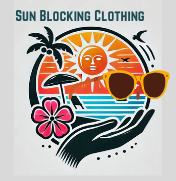
DNA Repairing Sunscreen?
DNA Repairing Sunscreen! ? Has this been successfully done? Sunscreen works by being on top of the skin, blocking sun rays. Rebuilding DNA would require entering the skin, being absorbed, or being taken internally!
Ok, so why would I give a 2nd thought to DNA in sunscreen? As a woman who has ignored a lot of the sun-protective things, I could have done through the years, not only for myself but for my family. Why would I care?
As a card-carrying member of the cotton farm-raised Texas citizen, I have not had enough respect for the sun. I should have been paying attention a long time before I did. I could blame the medical community for not sounding the alarm when I was young as they have started to do today.
We thought that you only used “Sun Tanning Lotion” when you wanted a tan. That is what we had, something to encourage tanning, not sunscreen to protect our skin. We welcomed a mild sunburn, knowing that when it healed, we would be browner! We didn’t know that we were guaranteeing skin cancer in the future.
Now That We Know About Sun Dangers
Now we know the dangers of UV exposure. My family is learning about how much it helps to take breaks from the sun and get in the shade!
The wearing of a sun hat is now making sense for us as we become sun safety-minded. How important are sunscreen and sun blocking clothing?
We are becoming aware of how dangerous the sun can be for our family. My grandchildren use better protection from the sun than their parents had. I am so grateful to see this happening. Maybe they can avoid the skin cancers their grandparents and parents have had to deal with.
As we become aware, we are becoming more curious about what is available to help us protect our skin.
Sunscreen To Rebuild Skin’s DNA?
It was a surprise to see an ad promoting a new miracle sunscreen. One that claimed to repair the damage to your skin’s DNA from too much sun!
Recently, several products have become available that claim to repair DNA damage inflicted by UVB rays. That’s a bold statement. To protect your genetic code from the structural harm that can lead to skin cancer is one thing. To actively correct that damage is another challenge entirely.
The repair of the DNA would be wonderful if it’s really happening. That idea led me to research. After discovering an article that included a statement by a retired biologist, Errol Friedberg, professor at the University of Texas Southwestern Medical Center. He was also an expert on DNA damage and gene-repairing enzymes.
(Source for the information if you are into reading reports- https://www.cdc.gov/cancer/skin/index.htm/)
He supposedly had not heard of any of those enzymes needed for DNA repair used in lotions or sunscreens.
These enzymes are fragile. And when you are rubbing them into your skin, which is a multi-layered organ? How are you going to be sure they’re getting into your cells? If he is wondering, so am I.
Rethinking Information
Thinking about my son and daughter’s recent dermatologist visits, I kept looking for some more information. Turns out information does exist supporting the claims of the ability to repair DNA!
We may be able to repair damaged DNA by applying the right enzymes topically! There is some very strong evidence that they could help your body’s natural gene-repairing machinery!
So why aren’t those enzymes in our sunscreens?
Do you want a short answer? It’s money. The long answer is a little more complex but is easily the most encouraging thing about sunscreen. My faith in the sunscreen industry is being restored.
Not to the point, it was when I thought sun tanning lotion was good for me. But it is better than it has been with the scare of cancer-causing chemicals in our sunscreen formula.
A review of this question of being able to repair and rebuild damaged and destroyed DNA in my skin cells makes me think that this may be true.
Jodi LoGerfo, DNP shares: When DNA in your skin cells gets damaged from being in the sun without sun protection, the damage can lead to genetic defects and allow mutations.
Damage can lead to genetic failure in your skin structure and support system. This usually shows up as skin cancer, wrinkles, sagging skin, or dark spots. Sometimes instead of a tan, you will wind up with what is known as hyperpigmentation.
When these cells are damaged it leads to genetic defects and mutations. These, in turn, can manifest in a few different ways including:
- Skin cancer
- Wrinkles
- Dark spots
- Hyperpigmentation
- Skin sagging
Search For DNA Repairing Products
After searching for a product with claims of DNA repair, I found Eryfotona Actinic. This product is from a Spanish dermatology company ISDIN. which runs $57.50 for a 3.4-ounce bottle. I have a bottle of this product, a gift from my daughter. But did not know enough about the product to appreciate what I had.
I didn’t understand that to work properly some of the products must remain on top of the skin. Now that I know about its qualities, I will appreciate it more.
Let’s Talk About Cost
For me, this is expensive, and prohibitively so for most people. ( To compare an 8-ounce bottle of Coppertone, a top sunscreen pick will cost around $15.)
Remember, sunscreen gives the best protection when applied generously and often. Apply when you are working out in a sports competition or sweating a lot, or swimming and in and out of the water, reapply after drying off water or sweat.
Otherwise, reapplying every 2 hours will help you stay safe. Pay attention to where the protection may disappear like on your back if leaning against a backrest or edge of the boat.
So that means if you are using enough of the DNA repairing sunscreen, you will get 4 applications, out of the bottle of sunscreen, That is expensive sunscreen. I would think that serum to apply the DNA repairing formula under your sunscreen a more economical product for protection from the sun might make DNA repair less expensive.
Add sun blocking clothing to the mix, and you will need less of either product. With an improved knowledge of how to stay safe from the sun by adding sun blocking clothing, you should be able to make your DNA repair product go further.
Why The Cost?
What you’re paying for are molecules like UV endonuclease and photolyase. When trying to put all this scientific talk into something that made sense to me, I realized that for some of the information, science would rule.
Needless to say, when you try to say the two processes’ names listed in the above paragraph out loud it sounds like you’re trying to confuse readers. Actually, both of these are DNA-repairing enzymes that work to repair genetic damage
They work to improve the damage caused by exposure to UV light. Sun-related damage, when allowed to accumulate, can lead to skin cancer.
Many years of research have shown that these molecules, as well as several of their cousins, are both weird and wonderful enzymes.
Take photolyases, for instance. This process becomes active by light from visible wavelengths through a process called photoreactivation.
This process of photolyases is happening because of light. This product can repair DNA damage caused by sunlight. It takes more sunlight, but when your skin gets the sunlight, damaged cells can repair themselves. Well done, evolution!
So, using some new products on your skin will help bring your skin back to the same DNA structure you had before getting too much sun! However, the protective formula is important in this DNA repair.
Evolution And DNA Repairing Sunscreen
But evolution giveth, and evolution taketh away. Humans don’t produce photolyases! So, now what?
Almost all organisms on Earth do produce photolyases. Animals and plants as well as bacteria and fungi all can rebuild themselves. At some point in their history, placental mammals like us stopped producing enzymes that heal DNA with light.
(Science has decided that humans must get by with a genetic patch-up we know as nucleotide excision repair. This process is less efficient.)
This is why our sunburn risk is important information. We have to protect ourselves. More About Evolution
Science Saw The $$ Signs
After isolating these enzymes, some scientists began to wonder if these enzymes could survive in topical treatments that could be delivered into human skin cells.
These scientists realized that being able to help people make new skin is an idea that is interesting and has the possibility to be very lucrative. They were right.
The founder of Revlon was the first to label cosmetics “as hope in a jar!” Why settle for hope when we could actively rebuild our DNA?
Is rebuilding already happening? Well, hardly, at least not here in the US. The FDA’s approval process is known to be more encouraging in the funding of trials in search of cures, rather than preventative measures.
The Rest Of The Story Of DNS Repair
The scientist’s efforts to raise the money needed were not successful. But in the process, the developing group got an offer from Estée Lauder to sell. And that’s the business decision that was best for them then.
So the company is now a subsidiary of Estée Lauder, and it continues to supply these repair enzymes and liposomes.
Estée Lauder controls the market, and enough of its customers are willing to pay for DNA repair enzymes that it can charge high prices for them.
“Everything comes down to money,” states dermatological surgeon Ronald Moy, founder of DNARenewal.
(A past president of the American Academy of Dermatology and the American Society for Dermatologic Surgery, Moy says he is creating his own skincare line with DNA repair enzymes because he believes the evidence of their ability to do what they say they will.)
He also states that unfortunately, putting these repair enzymes in sunscreens is an expensive process.
How This Information Affects You And Me
Maybe I should say “how this information affects me.” The cost of this kind of technology will keep a lot of us out of the market for DNA-repairing sunscreen at least for now.
With the information now available to science, we could see an affordable product at some point. However, why not save the DNA we have? Protect our skin so that it can continue using the DNA in our skin cells to keep our skin healthy and looking better.
This is again another place where preventing sun damage on our skin is easier than forking over our dollars to buy something we HOPE will work. I do realize that has not been my history, but I can make it my future.
You can too, using sunblocking clothing and sunscreen to double your protection against too much sun can be done. We can have better personal habits to keep our skin safe. We can adapt to safe sun lifestyles.

Sami’s Take On DNA Repairing Sunscreen
I personally agree with the guy who figured out how the enzymes could be of use. Sunscreen is a product that is difficult to make and ship with a proven shelf life. We do want it to still be effective when we buy it.
In light of all of this, you’ll probably not be surprised to learn that the scientists who are behind all this don’t think DNA repair enzymes belong in sunscreens either.
“Sunscreen is supposed to stay on the surface of the skin. DNA repair enzymes are supposed to penetrate the skin’s surface. It’s hard to create a formula that delivers one thing to the top and another to the subsurface,” he says. “What I’d really prefer to see is a DNA repair serum you apply first, and apply your sunscreen on top.”
Maybe cosmetic companies will be able to develop a better way to control and deliver both in one bottle. And who knows; perhaps they already have. With little research, it’s difficult if not impossible to say which formula is best.
I will be relying on tried and tested methods for summer sun protection. In our family, we will continue to keep up with what is going on with DNA-repairing sunscreens.
What are your feelings about DNA repairing products? Have you had good luck with their use?
Have you found ways to get your family to stay safer from the sun? Have any questions about this post? Please leave questions or comments in the comment section.
Thanks for reading,
Sami
